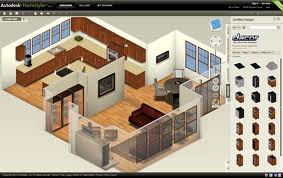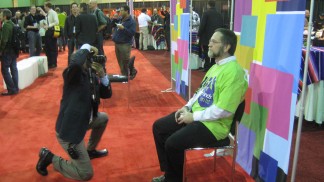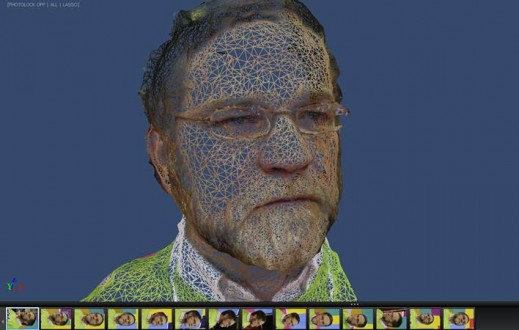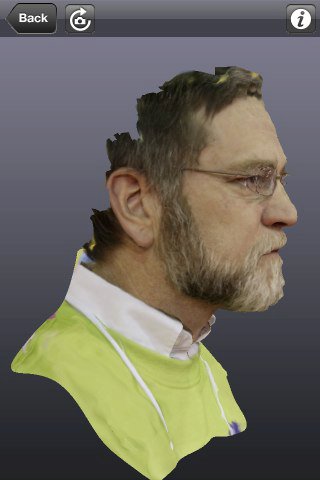
 A variety of new and novel technologies were on display at Autodesk University 2010 last week. Autodesk is the first to admit they are wondering which ones will take wing first.
A variety of new and novel technologies were on display at Autodesk University 2010 last week. Autodesk is the first to admit they are wondering which ones will take wing first.
By Kathleen Maher
Editor-in-Chief

Autodesk’s official message at Autodesk University 2010 in Las Vegas was all about the customer. CEO Carl Bass showcased several users with very grand projects including space vehicles and Teslas. The audience at Autodesk University is primarily users so the goal was to inspire them to expand their use of Autodesk’s tools and think big.
Autodesk is also thinking big these days. Of the major CAD vendors Autodesk is the most interested in leveraging the cloud, it is looking for new sales models, and of course new customers.
The press was invited to a special presentation the day before the official start of AU where they were regaled with news about new technologies, products, and initiatives. The overall impression was that Autodesk is really interested in the consumer market. In his Q&A session with journalists the next day Bass corrected that impression. The company is pretty interested in consumers but not necessarily in developing a consumer market for their products. He described the revenues from the SketchBook Mobile line as being pretty much peanuts in the whole Autodesk scheme of things. However, he also noted consumer products are helping to give Autodesk an insight into “our customers’ customers.”

Just as AU 2010 was kicking off Autodesk announced a new version of SketchBook Mobile. The latest version is for the Android mobile platform from Google, used by a variety of mobile telephone makers. Autodesk says the software has reached 2.2 million downloads, just on Apple’s iOS platform. The new version takes advantage of Android’s hardware button features, and comes in both free and paid versions.
Features for the new SketchBook Mobile app include dynamic resizing, the color wheel for choosing colors, layers, and a big favorite – drawing symmetry. The software requires Android 2.1 or higher. It’s recommended that the hardware platform have at least a 1GHz processor and 512 MB of RAM.
By an interesting internal quirk, the Sketchbook products are managed by Autodesk’s manufacturing group and indeed the product is used as a conceptualization tool by designers.

The company announced several new products that consumers will enjoy including the new Homestyler.com. Using Homestyler, people can create a room, view it in 3D, try out new finishes, colors, and materials, and save a snapshot. It’s easy to use except that it is cloud based so the response is less than immediate if you have slow connections. On the other hand it is accessible to Mac users, which is nice. If the world needed yet another tool for efficiently wasting time, this is a good candidate.

Autodesk also showed off Project Photofly, which enables users to create 3D spaces using digital photographs. The company says it could come in handy for creating as-built views. Project Photofly was formerly known as Camera Factory. It’s a photogrammetric application in which photos are combined into “Photo Scenes.” The technology creates 3D models with textures created from photographs. The result is something that looks pretty realistic and can be used for measurements, take-offs, etc.



This is another example of Autodesk taking advantage of all the interesting technology it has acquired over the years. Photofly looks like it uses technology originally developed at RealViz, a French photogrammetry company acquired by the company in 2008. RealViz had been using its technology primarily for film applications and it offered some consumer apps. Ironically, it never did do much with photogrammetry in architecture. Autodesk and the scientists that came from RealViz are now rectifying that oversight. Autodesk employees also told us Photofly combines acquired technology with a couple of bits of licensed code.
PhotoFly works with Windows. If you download a small application to your machine, it will allow you to submit photos to the Project Photofly server. The photos are combined into a Photo Scene which captures the 3D information. Photo Scenes can be exported to RZI, the native format for Autodesk’s Image Modeler or the AutoCAD DWG format.
Other new toys

Ever since CTO Jeff Kowalski showed up at Autodesk it seems like the company has been on overdrive, tinkering around in the labs. We can’t imagine where these guys find the time but it’s interesting to see where they’re pushing the boundaries.
The Media and Entertainment Team at Autodesk don’t get as big a show as the rest of Autodesk. AU is primarily about design and CAD but then 3DS Max is heavily used in companies that do design. It is in fact one of the primary tools for design visualization. At AU, we saw the debut of People Power, a tool to easily add people to a scene. In the incarnation we saw, it combines motion capture data with artificial intelligence (AI) path finding from the Kynapse technology. In practice, People Power lets users populate a scene, like a building, a street, or a factory, so they can see how the space works and how “friendly” it might be to the inhabitants. The people are stylized figures given behaviors to wander around a space according to dictates from the software user.
Infinite computing
The cloud and the opportunities it brings has been a big theme at Autodesk University for several years and each year the company gets closer to understanding how they’re going to work cloud power into their line of products. At the same time, there continues to be a strong element of ‘we’re not sure what people are going to do with this stuff but we’ll just put it out there.’ Actually, that was probably the gist of Kowalski’s speech this year: just imagine what you could do if the resources at your disposal were infinite—well buckaroos that’s what cloud computing is all about.
It was Kowalski’s theme that we’re at the early stages of taking advantage of cloud computing. He compared it to the invention of moving pictures—at first people put a camera in front of a play and just filmed it. Later came innovation when people realized they could move the camera, they could cut film to create effects, they could move the camera, and they could create things on film that could never happen in real life. Kowalski showed some of the toys and cool capabilities we’ve already talked about for cloud computing and he also talked about more practical applications including online rendering and analysis, and the ability to take Building Information Management (BIM) even further than imagined.
In the case of BIM, Kowalski noted that innovation of BIM now stops once the building is completed, but what about managing the building for the 30, 40, 50 years that it’s standing. Sensors can be added and it can be managed remotely—how is it using energy, is the cooling and heating adequate or is it wasting power, let’s turn those lights out at the end of the day, and so on. As an aside, Intel has been working on ideas like this for huge server complexes, the combination of computers, servers, and sensors in a building gets even more interesting, but we’re wandering off our point here.
Some of the newer ideas presented at AU were around remote management and leverage the cloud to see the whole building together—windows, sunlight, weather conditions, heating, cooling, etc.
There are other capabilities that the cloud can manage that aren’t even available on the computer. Kowalski talks about Moldflow, Autodesk’s technology for plastics. It’s a compute-intensive program and individual computers can’t even handle some types of analysis, but it could be done on the cloud. Likewise, rendering can be done more often and more extensively in the cloud than on individual computers. There is the advantage of being able to send a job off and continue working and, asks Kowalski, if you could do it remotely, wouldn’t you do more of it?
The point here is sort of a non-point. What would you do if you had infinite resources?
Autodesk’s new subscription strategy
Autodesk introduced subscription sales in 2001 and the idea caught on reasonably well reasonably quickly. Customers who invest in software to help run their business are as interested in support and service as they are in regular updates. Actually, they’re more interested in service and support than they are in upgrades and that’s just the issue Autodesk is setting out to address as it reloads the subscription model.
In practice, most users do not upgrade their software when it’s introduced so the ability to freely upgrade may not be that big a selling point for many users. Rather, users who are have ongoing projects, who work with sub-contractors, who exchange files with clients; these people do not upgrade their software until the new version has been tested, all the new plug-ins are available, and the entire user community is ready to go. So, regular upgrades of software is not necessarily a selling point.
Instead, Autodesk makes users a sweet deal for subscriptions so that it’s still cheaper to maintain software regularly (if not on a regular clockwork schedule) rather than pay for an upgrade. And, Autodesk improves the deal with floating licenses, the ability to keep a home copy of your chosen software, access to training videos, podcasts, e-Learning, and Autodesk U courseware but, my friends, there is apparently more.
We got a chance to chat with Autodesk’s VP of Subscriptions, Callan Carpenter who talked to us about some of Autodesk’s new features for subscribers. Autodesk has been trying to figure out how to take advantage of the cloud and at Autodesk University, the company was able to show how their thinking has evolved.
Carpenter told us that Autodesk plans to roll out new capabilities to subscribers throughout the year. It’s bundled as the Subscription Advantage Pack. In the case of AutoCAD 2011, for instance, subscribers will get the AutoCAD WS plug-in that will enable people to view, edit, and share DWG files seamlessly on web devices and browsers. By the way, AutoCAD WS is also getting an update that will let content accessed on the cloud be saved on a mobile device or PC. It was an almost immediate complaint from users as AutoCAD WS was introduced. Other features so far include DWG conversion, IGES import/export etc.
All that’s just the start of course, Autodesk is trying to figure out how they’ll introduce all this cool stuff they’re doing for cloud computing to customers who haven’t really asked for it and might like it, but won’t want to pay for it … at least not at first. That includes features like online rendering and iRay and analysis, maybe People Power, and the photogrammetry tools. The strategy serves a dual purpose because it helps Autodesk understand what users are really interested in doing with cloud computing and what directions to continue development and it helps introduce customers to new practices and ideas.
The Subscription Advantage Pack for Autodesk 3ds Max 2011 already includes iRay, which was integrated into the software in the last few months. In addition, Autodesk has worked with Nvidia’s PhysX engine to add GPU-accelerated rigid body dynamics.
Autodesk has teamed with Allegorithmic to add procedural rendering tools called Substance Air. It’s being offered as a middleware tool. New procedural textures can be created to simulate effects and geometry, but they’re lightweight textures. Some of the commonly used effects are bricks, mortar, grungy surfaces, paint texture and also, Autodesk’s mentions: pupil size, eye color, veins in the eye. Autodesk has implanted using its node based interface and it’s easy and fun to use—or at least it is in the demo. The Subscription Advantage Pack includes up to 75 Substance procedural textures. The Substance tools can be used with the Unreal Engine 3 game engine, Emergent’s Gamebryo game engine, and unity. Textures can also be baked to bitmaps.
Subscription realities
Callan Carpenter also talked with us a little bit about the trends towards subscription in the worldwide CAD market. As you’d expect, Calendar says that the rate of subscription attach varies according to regions and he claims that in some regions up to 95% of users are on a subscription program. In less affluent countries people tend to look harder at subscription deals and they’re less inclined to upgrade.
In all, says Autodesk in their most recent financial results, there are 2.6 million subscribers in the Autodesk user base accounting for 40% of revenue.
As Autodesk discovered the hard way, subscriptions play an important role in smoothing the ups and downs of economic waves. If Autodesk can get its subscription rate higher it can weather cataclysms in its individual markets like AEC and manufacturing.
What do we think
For the press and analyst corps, this wasn’t necessarily the most revolutionary Autodesk University but Autodesk University isn’t designed for us. It’s designed for the users. In chats with Autodesk personnel, they’ve said more people are signing up for classes in analysis. Also, Autodesk has just recently introduced new Factory layout software. This is an area that’s pretty much owned by Siemens, and Dassault to a lesser extent. Unless you consider that most factory layout today is done on plain vanilla AutoCAD. Grant Rochelle of Autodesk’s manufacturing group told us there’s a lot of interest in Autodesk’s factory tools and for good reason. Autodesk is offering an AutoCAD-based tool that sells for one-tenth the price of tools from Siemens and Dassault.
And that, as one example, is Autodesk’s strategy in the design fields. Put more in the box and worm your way into the competition’s sites.
It’s astounding to see the breadth of products Autodesk is now selling and offering as technology extras. It provides the company with a lot of interesting wiggle room—new niches for them to work their way in to customers using other products.





